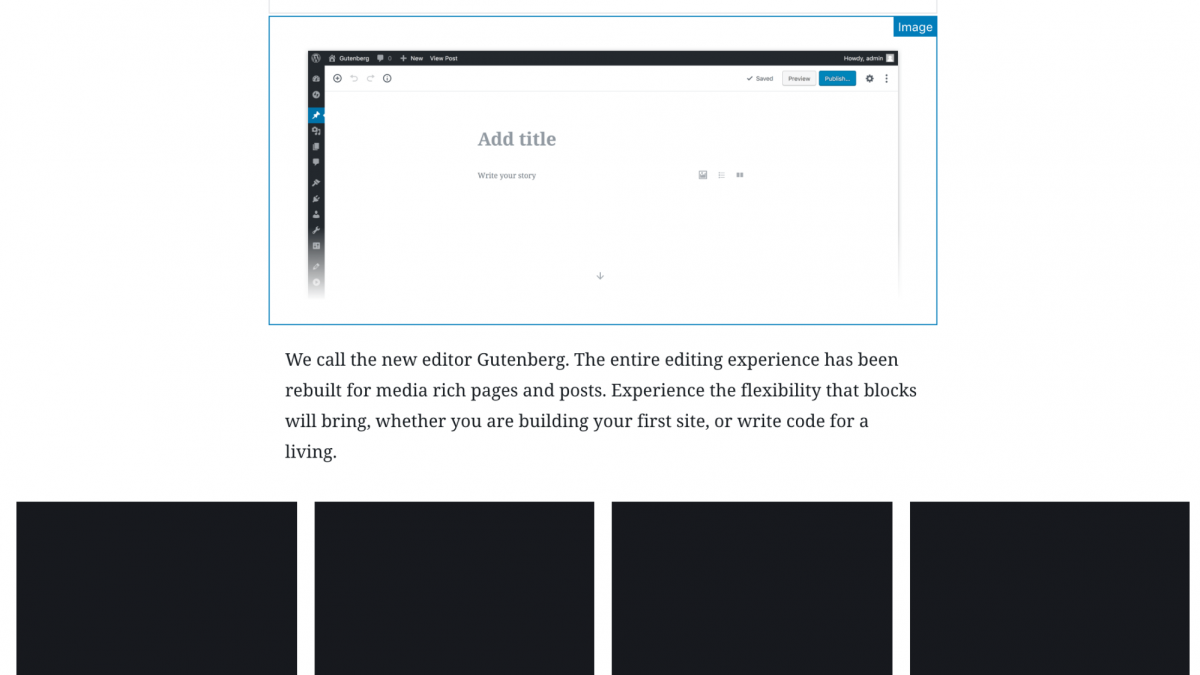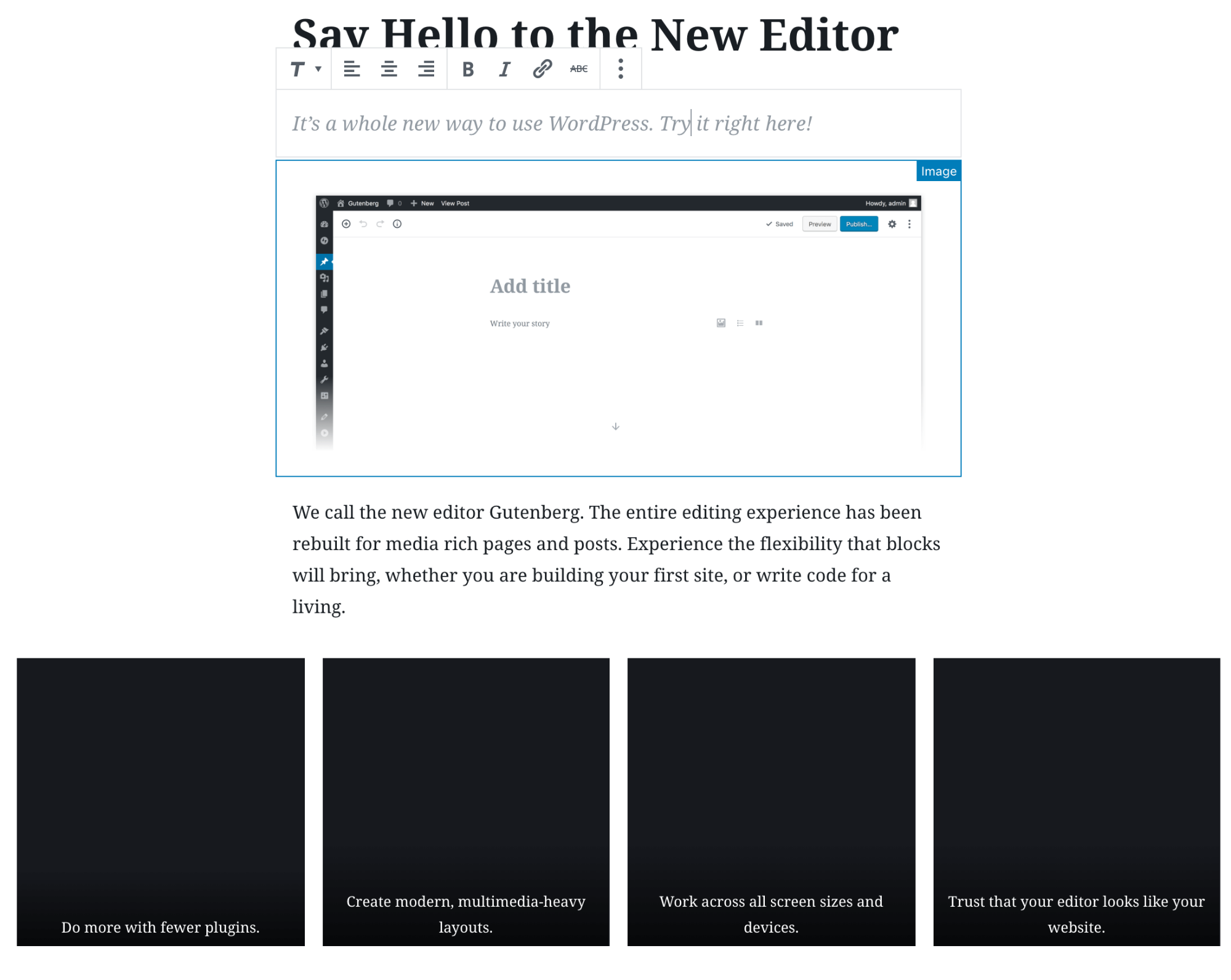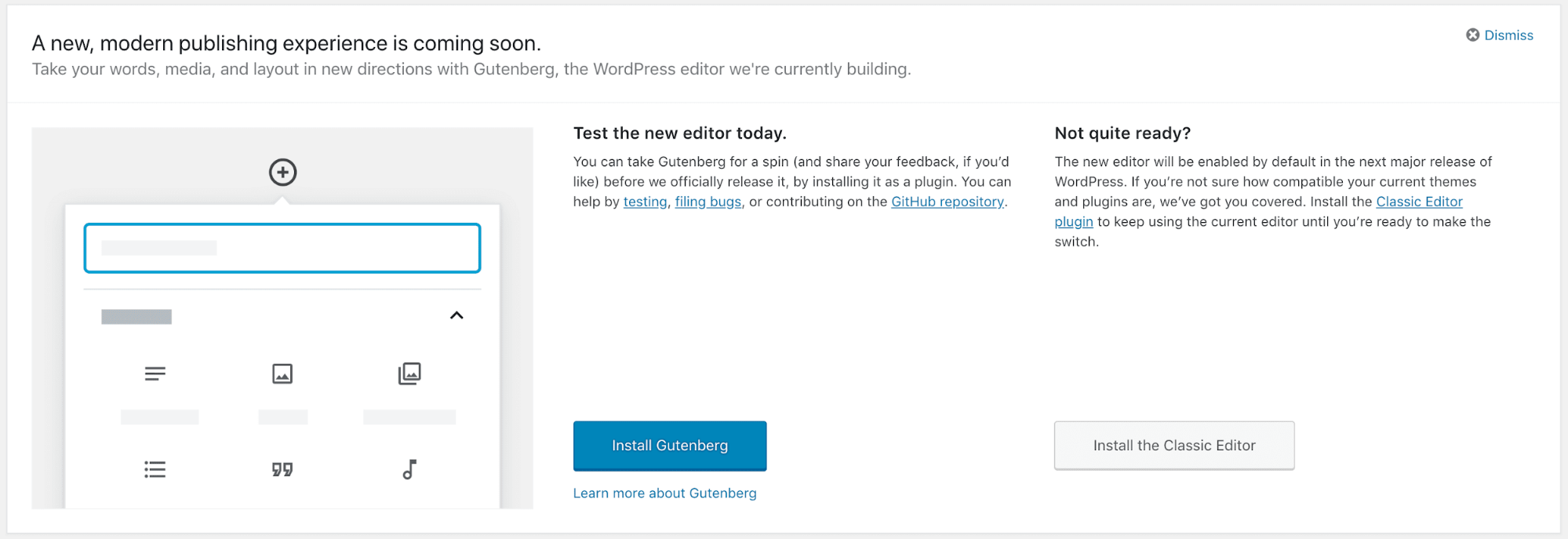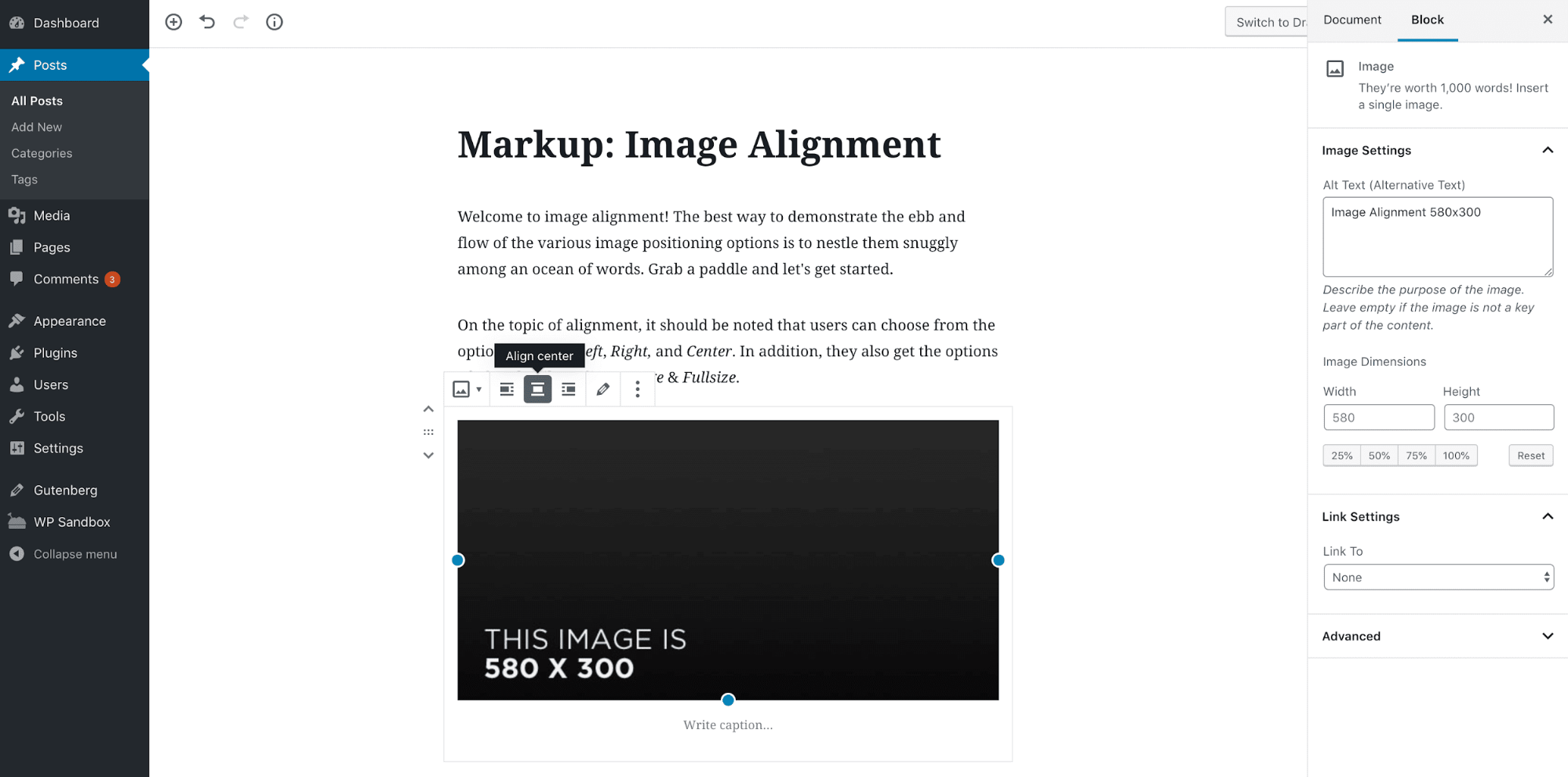
Gutenberg themes: what they are and why you might need one
Your choice of WordPress theme is usually based on a number of criteria, and it's not something you should regularly change. However, with the upcoming introduction of Gutenberg, you may need to check that your chosen theme is compatible.
In fact, the whole situation is much more complex than simply asking, Do I own a Gutenberg theme? You’ll need to guarantee that your site and theme are compatible with the new editor, but the process may not seem exactly straightforward.
In this post, we'll explain why that is, and also look at a few of the Gutenberg-compatible themes you can choose from. However, before that, let’s discuss the Gutenberg project as a whole!
A brief introduction to the Gutenberg editor

If you’re a site owner (or more specifically a non-developer), you’d be forgiven for not knowing a thing about Gutenberg at this point. We feel your pain as, apart from coverage by other WordPress blogs, there’s not been too much official promotion other than a ‘callout’ you may have seen in your WordPress dashboard:

Up until now, we’ve been using what’s now known as the ‘classic editor’ to create posts and pages in WordPress. While there’s been a need to update this interface for a while, WordPress has been dragging its heels.
As such, we’re now in a position where other platforms such as Medium and Squarespace have been chipping away at the WordPress user base. Naturally, the content management system (CMS) has had to defend its position, and the main way it’s chosen to do this is by implementing a brand new editor called Gutenberg:

This moves away from the word processor layout, and instead focuses on creating dedicated layouts for content using ‘blocks’. Essentially, these cover the various elements you’ll need to create posts and pages, such as text, audio, video, and much more.
However, Gutenberg isn’t perfect, which is understandable given how new the project is. In fact, arguably, Wordpress’ hardest battle has been to convince the WordPress community of its value.
How developers have reacted to Gutenberg
As is to be expected, getting the development community onside when it comes to new iterations of WordPress is absolutely vital. Without their support, new features can only be implemented so far, and could even become abandoned if the reception is particularly negative.
If you’ve read anything on Gutenberg already, you’ll know that the editor has its critics. While we’re not going to wade into this discussion, what we can say is that adoption from developers has overall been somewhat hesitant.
In a nutshell, developers have had to consider the following when it comes to Gutenberg:
- Do my themes and plugins work with the editor?
- If not, what do I need to implement to guarantee compatibility for my users?
This seems simple on the surface, but the situation is more complex than it first appears. For example, while Gutenberg is essentially a more focused grouping of already-existing WordPress features, some under-the-hood restructuring has obviously taking place.
What’s more, there’s been arguably little help on how to get themes and plugins ready for Gutenberg. WordPress developer Daniel Bachhuber has been prominent in this area, as he has set up and closed a few projects over the past few months with a focus on helping other developers become Gutenberg-compatible.
However, at this point, we’re practically on the home straight, with WordPress 5.0 planned for release this month. Given this, the main focus for many site owners should now be about making sure their sites are compatible with the new editor.
Gutenberg themes: whether they exist and how to guarantee compatibility
Of course, the primary concern of many site owners is whether their site will ultimately ‘break’ once Gutenberg goes live. In time-honoured WordPress tradition, the answer is “It depends”. However, there’s little need to worry as the situation is more positive than negative.
The first element you’ll likely look at is your theme, and whether there are any compatible Gutenberg themes available. Even if you carry out some cursory research, you’ll notice very few themes are marked as “Gutenberg-ready”, which could lead you to believe uptake in this area has been thin on the ground.
In reality, the answer can be inferred in part from our previous take on the community’s opinion of Gutenberg. In a nutshell, we believe the WordPress top brass doesn’t want to create divisions between ready and ‘unready’ themes. After all, this simply encourages developers to create themes and plugins for one editor or another.
As such, you’ll rarely see any prominently marked “Gutenberg themes”, although that doesn’t mean you can’t still ensure compatibility.
How you can guarantee Gutenberg compatibility
Your only way to guarantee compatibility with Gutenberg is to either find a theme built explicitly to work with Gutenberg, or find one that is clearly marked as compatible. As we’ve suggested, the latter are currently thin on the ground.
However, there is one theme due to be released alongside WordPress 5.0 and Gutenberg that meets these requirements: Twenty Nineteen.

This is the latest in a line of default themes that showcase the newest features of WordPress, with this one specifically built around Gutenberg. Even so, Twenty Nineteen isn’t going to be suitable for lots of different websites, so you’ll likely need to keep searching.
The answer could be closer than you think. Our recommendation is to thoroughly test out your current theme for compatibility on a staging or local environment. This way, if there’s an issue, you can figure out how to fix it or obtain a new theme ahead of time.
To get cracking on this, you could search big repositories such as the WordPress.org Theme Directory or ThemeForest simply for the word “Gutenberg”. Alternatively, finding a quality roundup of Gutenberg-ready themes could also prove useful.
Finally, many theme developers have stated that they’re going to wait for Gutenberg to go live before working on compatibility, which could cause some problems. Until there’s an update, some functionality may not work correctly. In our experience, contacting them directly to ascertain what their plans are for the new editor can help set your mind at ease.
Conclusion
Gutenberg is imminent, and this means making sure your entire website is compatible with the new editor is important. The most logical place to begin is with your theme, and the good news is that most sites should already be good to go.
While many themes aren’t specifically marked as Gutenberg-enabled, this doesn’t mean you need to worry. For example, the new default Twenty Nineteen theme is obviously going to be ready, and you can test out your current theme on a staging site to ensure it’s compatible.
Are you looking forward to living in a Gutenberg world? Give us your thoughts in the comments section below...
,


